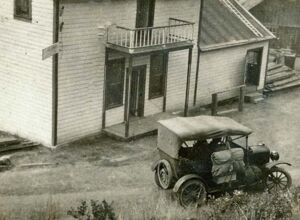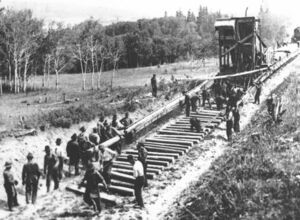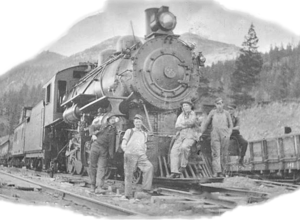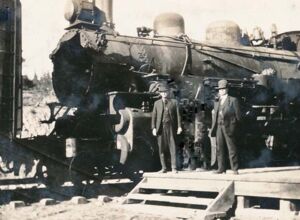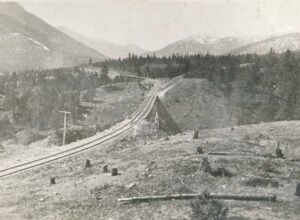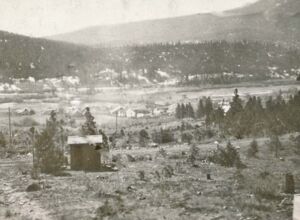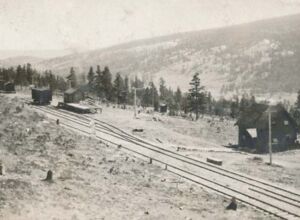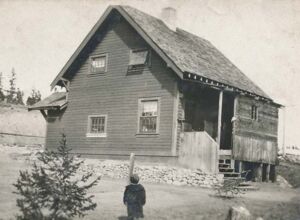On to Williams Lake
Construction to extend the line from Clinton began in the winter of 1919. William Pinchbeck’s original wheat field was chosen as the site for the village of Williams Lake.
Entrepreneurs rushed to the area, and when the first work train puffed into Williams Lake on September 15, 1919, the community boasted stores, banks and hotels, some housed in rough tarpaper shacks or tents. The steam locomotives pulled mixed trains of passengers, freight, cattle and fuel to the new town.
Williams Lake was the end of the line until 1921 when the rail line was pushed north to Quesnel. Again, rough terrain stopped construction, just north of Quesnel and it was over 30 years before the line was extended to Prince George, arriving there in 1952. The link to Fort Nelson was not complete until 1971 and the PGE became known as “the railway from nowhere to nowhere.”
Extending the PGE North
Williams Lake was the end of the line until 1921 when the rail line was pushed north to Quesnel. Again, rough terrain stopped construction, just north of Quesnel and it was over 30 years before the line was extended to Prince George, arriving there in 1952. The link to Fort Nelson was not complete until 1971 and the PGE became known as “the railway from nowhere to nowhere.”
Was the PGE a Success?
Critics from the Lower Mainland said it was neither “Pacific, Great nor Eastern,” but to the Cariboo, the railway was the economic lifeline. It did indeed “open up the country,” bringing with it both people and prosperity – and the city of Williams Lake.

